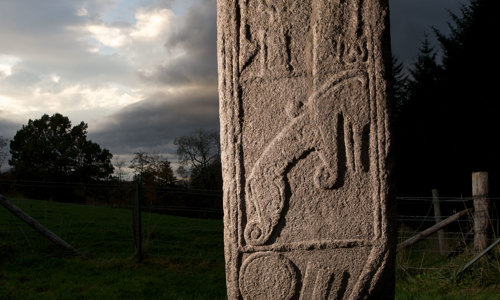History
A mother church
Kinkell Church first appears on records in the early 1200s. This was the mother church of Kinkell parish, with dependent chapels at Dyce, Drumblade, Kemnay, Kinnellar, Kintore and Skene.
It was associated with the Knights Hospitallers from the 1300s, though that came to an end in 1420, when the churches' revenues transferred to Aberdeen Cathedral.
The church was partly remodelled in the early 1500s. Kinkell’s rector Alexander Galloway, a canon of Aberdeen Cathedral, paid for:
- the sacrament house in 1524
- a carved stone panel depicting the crucifixion in 1525
- A representation of St. Michael the Archangel, also on the north wall.
The parish was amalgamated with Keithhall in 1771. Kinkell Church was abandoned and partly demolished to provide building materials for a new parish church.
Fine fixtures
The sacrament house is a unique example of this kind of medieval church fixture. It’s a wall cupboard which is designed to hold the consecrated host – the wafer believed to become the body of Christ during mass – in appropriate surroundings.
Kinkell’s sacrament house is cross-shaped, with the cupboard in the lower part. The sacrament house is decorated with:
- the words HIC EST SEVATUM CORPUS DE VIRGINE NATUM (‘Here is preserved the body which was born of a virgin’) on the panelled compartments forming the arms of the cross
- two angels holding the monstrance on the centre and top of the cross, though these panels are now defaced
- a crucifixion scene
The panel depicting the crucifixion and a representation of St Michael the Archangel were removed and replaced by a bronze replica in 1934. The originals are now lost.

















